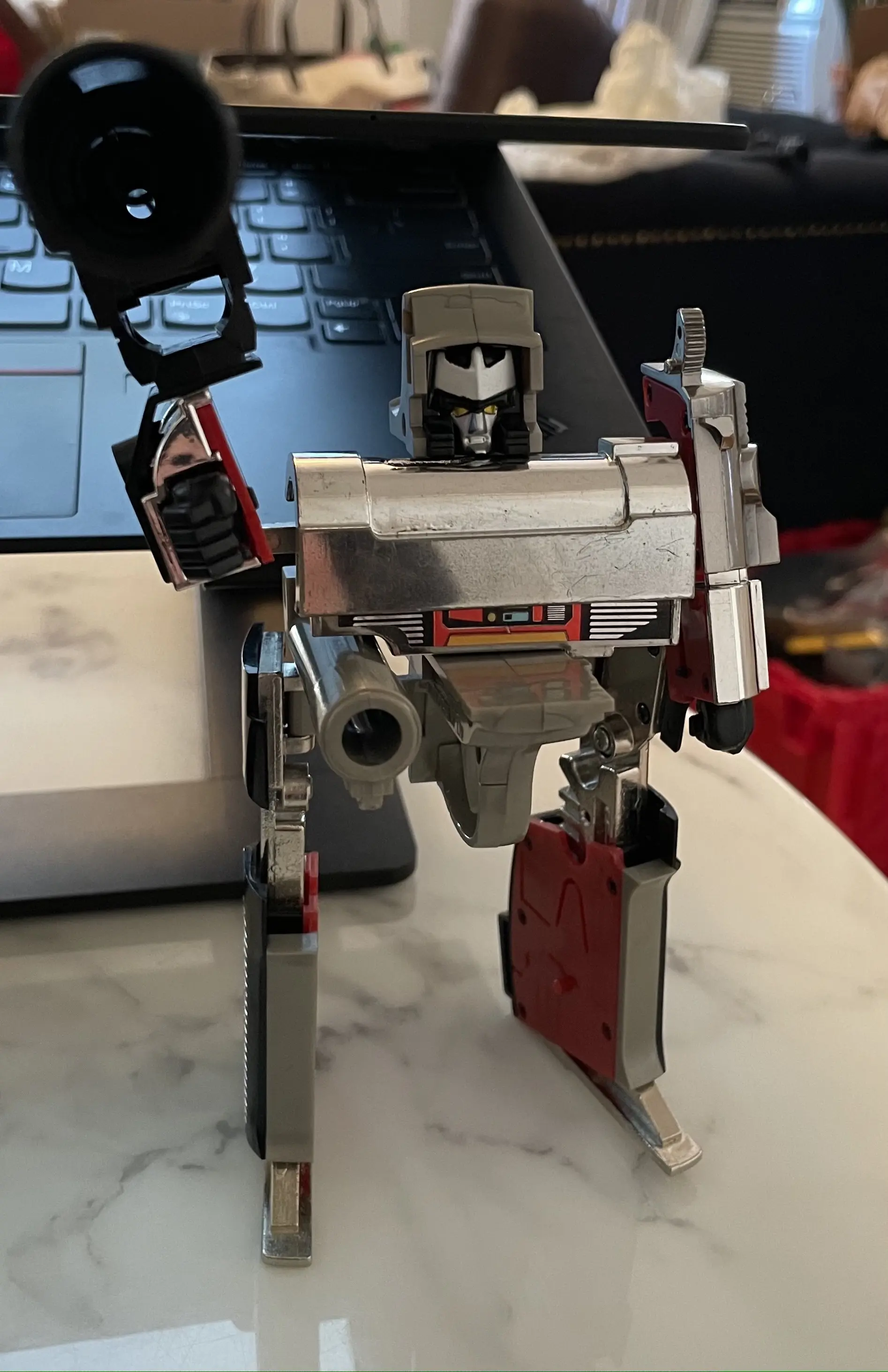Megatron
- 2 minutes read - 331 wordsOf all the toys of my youth, not many survived its duration in decent-looking shape. In 2000, I found myself in California, alone, with a few extra bucks and an eBay account, and so I bought this Megatron.
While I had loved “Star Wars” toys during my pre-pubescent years, “The Transformers” heralded something bigger, more Shakespearean. If “Star Wars” found its root in The Hero with 1,000 Faces and Excalibur, “The Transformers” were rooted in Hamlet, King Lear, and the Roman Empire.
There was also an element of class consciousness. The Autobots (the Good Guys) were all personal conveyance, freight, and commercial vehicles (capitalist enterprise). The Decepticons were all military hardware (only degenerates fetishize their ownership of military hardware and parade it down their capital’s main avenues). “United in righteousness, the commercial class can overwhelm the aggressor militarists with pluck and wile” was a message that had much resonance in late-Cold War / Reaganite America.
Megatron, evil leader of the Decepticons, pictured above, transforms into a toy that looks like a gun. There’s no orange tip on this bad boy to let you know it’s a replica, this is the kind of toy that would get boys shot.
The toy also embraces danger. When you pull his trigger, it goes “snap” as an eyeball-obliterating powerful spring pops to make the sound. His pieces are not all plastic. There’s some real metal in his parts that, if the toy were lobbed at a sibling might merit a trip to the ER for stitches. In his fully-transformed form as a Walther P38, there’s a rifling attachment and an arm brace. Transformed, Megatron is a scarily good approximation of a firearm.
Lastly, you can see that the designers were struggling from their Asian point of reference to translate the facial styling into something familiar to a Western consumer. The head shape is distinctly samurai-informed and the eyes are vaguely Styx Mr. Roboto styled (wow, that styling, so problematic these-a-days).

Megatron: Leader of the Decepticons